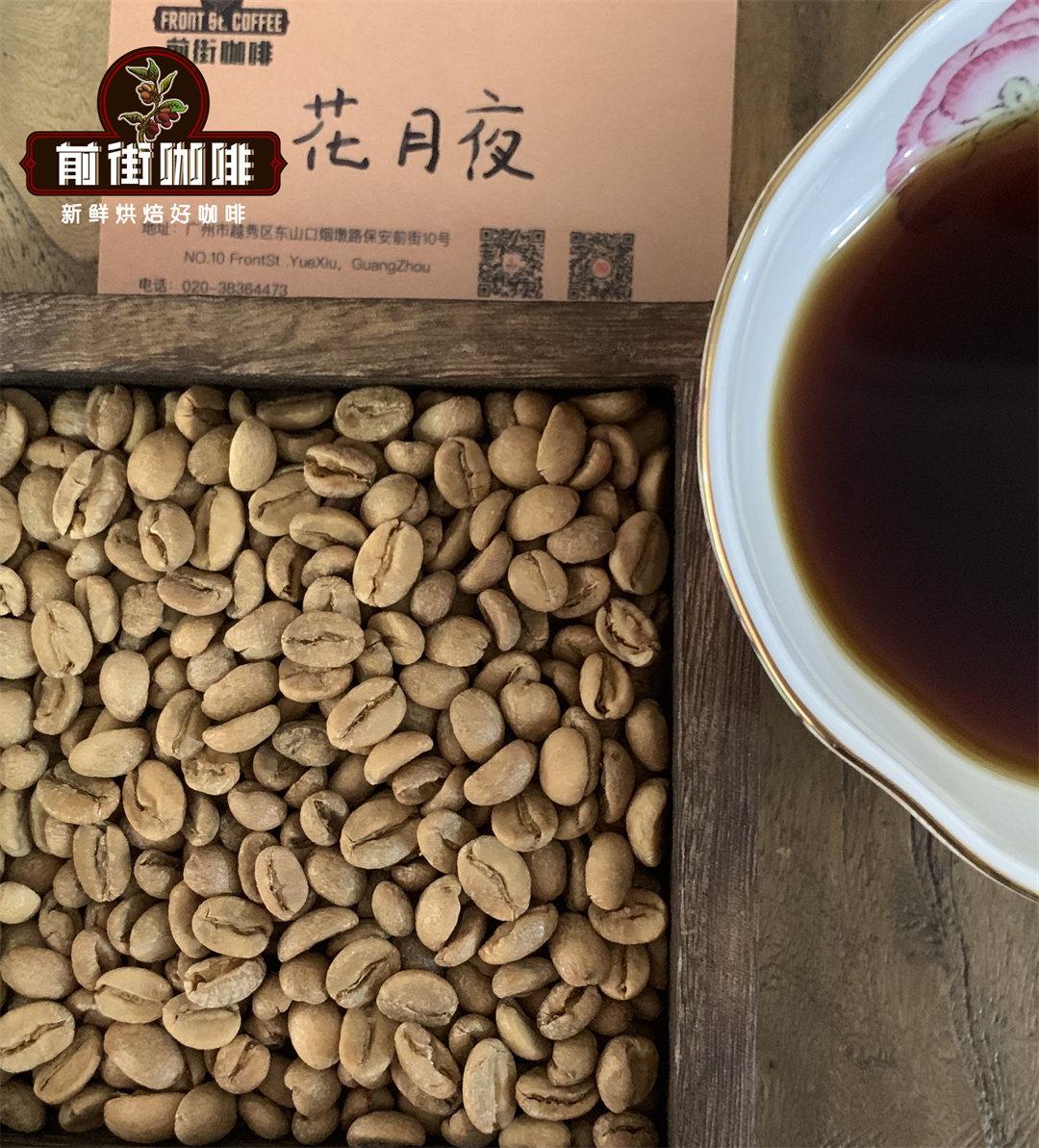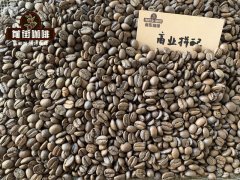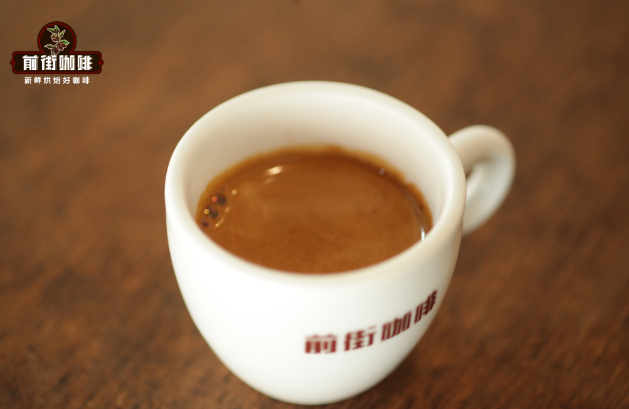What is the meaning of Colombian boutique coffee Columbia coffee Supremo?
The high-quality and above-average Colombian coffee (Cafe de Colombia) is located in the northwest of South America, adjacent to the Pacific and Atlantic Ocean, and runs through the Andes in the north and south, with an elevation of about 1200 million 2000 meters above sea level. it is one of the world-renowned producers of high-quality Arabica coffee beans and one of the few coffee exported under the name of the country. The growing areas of Colombian coffee beans, located in the geographical environment of low latitude and high altitude, give coffee beans an excellent growing environment, and because of this advantage, Colombian coffee beans have become very popular products in the coffee market.
In the 18th century, Dutch Jesuit missionaries introduced Arabica coffee beans to Colombia. it can be said that coffee beans were planted for the first time in Colombian history. after that, coffee beans were also popular in Colombia and became a new breeding program for farms. Coffee beans were exported on a commercial scale in the early 19th century and became one of the largest coffee exporters in the world because of their good quality and stability.
National Coffee producers Association of Colombia (FNC)
At the beginning of the 20th century, Colombian coffee merchants established the Colombian National Coffee producers Association (Federaci ó n Nacional de cafeteros, FNC), whose purpose is to "protect the interests of coffee farmers and help promote coffee beans to consumers" as the main axis, and then created the official Logo of Cafe de Colombia, so that Colombian coffee can stand out in the global coffee market, and this design is the first brand marketing strategy in the history of coffee in the world!
The fictional protagonists in Logo-coffee farmers Juan Valdez and donkey Conchita, are designed to take the plateau where coffee is grown, donkeys who help transport coffee, and coffee farmers with mustache as elements. The cordial image has successfully made Colombian coffee deeply rooted in the hearts of the people and directly put Colombia on the international stage. It is one of the most successful marketing cases in the world. Founded by FNC in 2002, the first Juan Valdez Cafe opened at Colombia's El Dorado International Airport. Today, there are more than 320 stores around the world.
Colombian commercial coffee beans and boutique coffee beans
Colombian coffee beans are graded according to the size of coffee beans-Supremo is the highest grade with a size of more than 17 mesh, followed by Excelso with a size of 14 to 16 mesh, and if you want to be selected as a boutique coffee, you need to be qualified for more than 18 mesh (Supremo). In addition, Colombian coffee beans have a high international reputation for their good quality, stable output and elegant flavor, whether they are commercial coffee beans or Arabica coffee beans.
Commercial coffee beans
Location: central and northern Colombia, approximately 1000 to 1500 m above sea level
Well-known producing areas: Medellin (Medell í n), Amenia (Armenia), Manizare (Manizales)
Flavor presentation: fruit acid strong Central and South American flavor
Location: northeast Colombia, less than 1000 m above sea level
Well-known producing area: Santandi Province (Santander)
Flavor: mellow bitterness, low acidity, similar to Indonesia's Mantenin.
Boutique coffee beans
Location: southern Colombia, above 1500 m above sea level, with many volcanic geology distributed in this area
Well-known producing areas: Cauca, Huila, Meta, Tolima, Nari ñ o
Flavor: floral, berry, caramel, drupe, mellow, lively and rich in layers
Varieties and processing methods of Colombian coffee beans
Taking a comprehensive view of the advantages of the growth environment, the stability of yield and quality, the unique and delicate flavor, and the success of the marketing strategy, Colombian coffee beans are developing in a very stable direction from planting to selling. Colombia has also successfully cultivated a variety of different coffee beans, and the models are all well-known varieties.
Rich in Central and South America
Kaddura (Caturra), bourbon (Bourbon), iron pickup (Typica), Parkmara (Pacamara)
Resistant variety
Rare varieties of Castillo, Tabi, Colombia
Geisha / Rosa (Gesha), small Mocha (Mocca), Lome Sultan (Rume Sudan), Eugene Odes (Eugenioides), pointed Bourbon (Laurina), Mara Rosa (Maraguesa), Pink Bourbon (Pink Bourbon)

In the step of processing, Colombian coffee beans are most commonly washed, and almost every small farmer's family is equipped with a special processor that can be washed. Washed coffee beans are usually balanced, sour and sweet. In recent years, Colombian coffee farmers have also used emerging processing methods to treat coffee beans, such as anaerobic fermentation and anaerobic sun drying, in order to add uniqueness to the flavor of Colombian coffee beans.
With the advantages of rich ecological environment, high altitude and low latitude, and stable temperature, Arabica coffee beans have been able to flourish and reproduce from generation to generation in Colombia, and have become a very valuable industry in Colombia. with the gradual expansion of coffee in the global market, Colombian coffee beans have a close and far-reaching relationship with Colombian politics, economy and culture. Colombian coffee beans are still a very competitive coffee producing country in the world, not only the second largest mass producing Arabica coffee beans in the world, but also the third largest coffee producing country in the world after Brazil and Vietnam.
Important Notice :
前街咖啡 FrontStreet Coffee has moved to new addredd:
FrontStreet Coffee Address: 315,Donghua East Road,GuangZhou
Tel:020 38364473
- Prev

The advantages of individual coffee what's the difference between single coffee and formula coffee?
After drinking two or three cups of coffee, we can unconsciously talk about finance and state affairs, as well as gossip. Coffee makes it easier to socialize, sweeter, more conscious, more creative, and keeps you awake if you want it. Whether you drink it with a tacky large cup or a delicate small cup, the effect is the same and everyone is equal. This is a passage from the New York Times in 1949, which shows the importance of coffee.
- Next

What's the difference between hand-brewed coffee and espresso? can Italian coffee beans be brewed by hand?
Coffee, more and more people like it, and even catch up with fast food tea, such as milk tea, but each has its own strengths in the consumer group. When it comes to coffee, we have to mention hand-brewed coffee and espresso. The most commonly used hand-brewed coffee is single-grade coffee, which is undecorated and not rough.
Related
- Beginners will see the "Coffee pull flower" guide!
- What is the difference between ice blog purified milk and ordinary milk coffee?
- Why is the Philippines the largest producer of crops in Liberia?
- For coffee extraction, should the fine powder be retained?
- How does extracted espresso fill pressed powder? How much strength does it take to press the powder?
- How to make jasmine cold extract coffee? Is the jasmine + latte good?
- Will this little toy really make the coffee taste better? How does Lily Drip affect coffee extraction?
- Will the action of slapping the filter cup also affect coffee extraction?
- What's the difference between powder-to-water ratio and powder-to-liquid ratio?
- What is the Ethiopian local species? What does it have to do with Heirloom native species?

